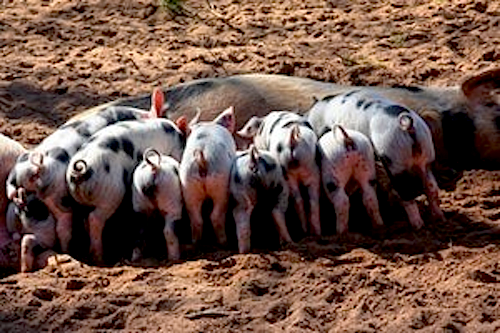|
|
Developmental Biology - Immune System
Immune Response Different In Girls & Boys
Difference in immunity begins during the first days of life...
A team of scientists from the Universities of Bristol and Reading in the United Kingdom have found that 28-day old piglets produce very different levels of immune cells, antibodies and other immune-associated molecules depending on their sex. This observation contradicts previous evidence suggesting differences in immunity begin during puberty.
"Although we don't know why, we know that young girls tend to produce a more protective immune response to vaccination than boys. But what we did not expect to find is that young girls also appear to have a more regulated immune environment in their intestinal tissues than boys."
Mick Bailey PhD, Professor of Comparative Immunology, Bristol Veterinary School, United Kingdom.
Around 70 per cent of our immune system is driven in early life by gut bacteria.
According to Professor Bailey, piglets are valuable pre-clinical models for human infants, especially for nutritional studies. Now, the latest research for the first time shows that probiotics and prebiotics can have different effects on the immune system in males compared to female piglets. For example, prebiotic inulin significantly increased the number of cells responsible for controlling immune responses — the regulatory T-cells.
But only in male piglet guts, not in female piglet guts.
"We need to rethink how we design, and analyse data from nutritional trials in youngsters. Currently, studies looking at the effectiveness of dietary supplements on the immune system assume the same thing happens in boys and girls. But, we now show this is not the case. Sex may be influencing data on the effectiveness of probiotics and prebiotics in infanthood."
Mick Bailey PhD.
The question raised is why? Is it because levels of different sex hormones make the immune systems react differently as a side effect? Or is it that the immune and reproductive systems need to stay fundamentally linked during early development?
Now that researchers are aware of these differences in male compared to female piglets, they can no longer be looked at as one group.
"In the future, we could find that specific probiotics or prebiotics are more beneficial for girls, while others could generate better health outcomes for boys. Given the underlying differences in immune development we identified between boys and girls, taking sex into account could provide a simple means to improve the effectiveness of pharmaceutics and other therapies which act on the immune system."
Mick Bailey PhD
In a previous study in 2018, it was found that the developing immune system in pigs can be programmed very early. Piglets exposed to an extensive, outdoor farm during just the first day of life retained a regulatory immune environment in their guts even after 28 days of 'urban living' — a finding that may explain why there is a reduced incidence of allergies in children raised on farms.
Abstract
RNA quality control (RQC) and post-transcriptional gene silencing (PTGS) target and degrade aberrant endogenous RNAs and foreign RNAs, contributing to homeostasis of cellular RNAs. In plants, RQC and PTGS compete for foreign and selected endogenous RNAs; however, little is known about the mechanism interconnecting the two pathways. Using a reporter system designed for monitoring PTGS, we revealed that the 26S proteasome subunit RPT2a enhances transgene PTGS by promoting the accumulation of transgene-derived short interfering RNAs without affecting their biogenesis. RPT2a physically associated with a subset of RQC components and downregulated the protein level. Overexpression of the RQC components interfered with transgene silencing, and impairment of the RQC machinery reinforced transgene PTGS attenuated by rpt2a. Overall, we demonstrate that the 26S proteasome subunit RPT2a promotes PTGS by repressing the RQC machinery to control foreign RNAs.
Authors
Myung-Hee Kim, Jieun Jeon, Seulbee Lee, Jae Ho Lee, Lei Gao, Byung-Hoon Lee, Jeong Mee Park, Yun Ju Kim and June M. Kwak.
Acknowledgments
The authors thank Y. Watanabe for the pDCP2-DCP2-GFP transgenic line, H. Lange for the RRP41-GFP and RRP41-MYC transgenic plants, H. Vaucheret for the L1 line, S. Park for the JAP3 transgenic plants, C. You and J. H. Park for the technical advice. This work was supported by IBS-R013-G2 from the Institute for Basic Science and in part by a grant from National Research Foundation (2019R1A2C3007376) and start-up funds from DGIST to J.M.K., and in part by (IBS-R013-D1) from the Institute for Basic Science.
Return to top of page.
| |
|
Dec 12 2019 Fetal Timeline Maternal Timeline News
 Piglets are valuable pre-clinical models for human infants, especially for nutritional studies. CREDIT University of Bristol and Reading, UK.
|



